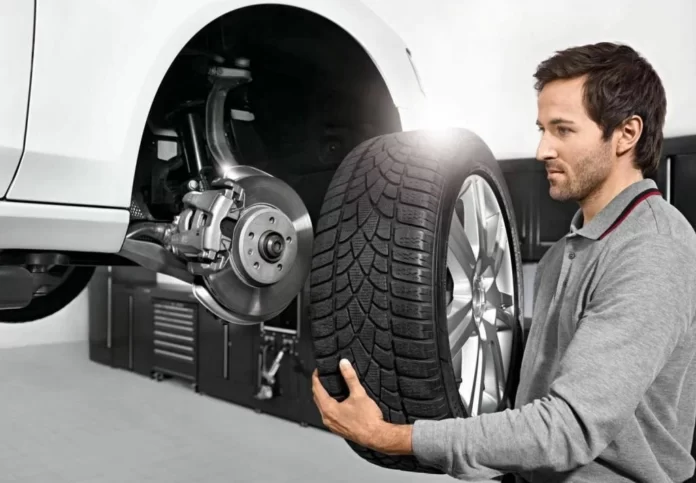Introduction
Most tire shop dealer softwares are mainly trash. Because they don’t have the features that can help in running a tire shop. And if you don’t pay attention to features before buying any kind of tire dealer software. Then you are just investing for nothing.
And I can assure you this investment is going to fire back at you, and instead of relieving you from stress it is going to give you more stress. And you will probably regret making this investment. Also sometimes, those companies which own these software market their software in a way that it becomes irresistible for you to say “yes” to their offer.
So today I am going to share with you the top 5 utmost important features that every successful tire dealer software should have. And if the software you are purchasing has these features. Then rest assured because this software has what it takes to transform your tire dealer shop.
5 most important features of tire dealer software
Reporting and analytics
With help of this feature you can generate reports. These reports contains various information such as sales performance, customer data, inventory status, giving you an overview of your business.
These tools can track previous sales and give insights into which tire is selling well, which season sees spikes in sales, and how are your sales as compared to your previous data. With help of this information you can guess accurately which products to put in-stock and when to put promotions or sales offers.
Inventory turnover
This metric shows how quickly inventory is sold and then replaced. High inventory turnovers means efficient operation, while low inventory turnover might mean that you sell slow moving products which can be identified by these software.
With help of this kind of reporting you can optimise your inventory to reduce carrying costs and maximising profits.
Profitability analysis
With help of this feature you can analyse profits on each item or product in your inventory. You can compare margins on different and various tire sizes and brands. This will help in understanding which areas of your business contribute most to your bottom line. This can also help in improving our pricing strategy.
Imagine you run a tire dealership that offers various tire brands and sizes. You are selling both premium and budget tire brands to cater the needs of your customers. However, you notice that while premium tires have a higher price point and seem to generate more revenue, they also have higher acquisition costs from suppliers.
Using the profitability analysis feature, you can break down your sales data and expenses to check profitability of each tire.
Read Also: Flat Tire Repair Services!
Premium Tires:
Average Selling Price: $150 per tire
Cost Price from Supplier: $100 per tire
Marketing and Sales Costs: $10 per tire
Average Profit Margin per Tire: $40
Budget Tires:
Average Selling Price: $80 per tire
Cost Price from Supplier: $50 per tire
Marketing and Sales Costs: $8 per tire
Average Profit Margin per Tire: $22
Now, let’s consider the sales data:
Premium Tires: Sold 500 units, generating $75,000 in revenue and $20,000 in profit.
Budget Tires: Sold 1,000 units, generating $80,000 in revenue and $22,000 in profit.
With this analysis, you can see that while premium tires have a higher profit margin per tire, budget tires have a higher overall profit due to their higher sales volume. Armed with this insight, you might decide to:
Adjust Pricing: You might consider a slight price increase on premium tires to boost their profitability further without significantly impacting sales volume.
Marketing Focus: Since budget tires are contributing more to your bottom line, you could allocate more marketing resources and promotions to this category to maintain or increase sales.
Supplier Negotiations: With a clear understanding of profitability, you can negotiate better terms with suppliers, potentially reducing your cost prices on certain products to improve margins.
Inventory Management: You can optimise your inventory to ensure you have the right mix of premium and budget tires in stock, preventing overstocking of low-profit items.
See how much tire dealer softwares can be beneficial. If you were a repair shop owner you might not even have the chance to analyse these kinds of problems and you were to be always left-out in the dark and didn’t even have the chance to optimise your inventory. This also shows the importance reporting and analytical tools have which is mostly under-estimated.
Customizable reports and dashboards
With help of customization you can trailer reports and dashboards to display specific metrics and data points that matter to your business. With help of this you can focus on your KPIs that resonate with your goals and strategy.
Point of sales integration
Make sure the software you purchase is a point of sale integration. Without point of sale integration you will have to manually generate invoices and receipts. But with help of POS integration you can automate this task and generate invoices within seconds and even send out these invoices digitally.
Also with the help of payment option you can accept payments in cash as well as digitally. POS is like an accountant for you. It’s a must and essential feature for every repair shop owner who wants to escape the nightmares of paperwork.
Conclusion
So these were 5 most important features your tire dealer software should have. There are also other features like CRM and automotive repair estimate calculator etc. But according to business point of view these are important ones and can help you in your day to day life and automate tasks at your shop.
Also make sure your POS also has features like parts ordering. With help of this feature you can easily order parts without needing to even lift a single finger.








